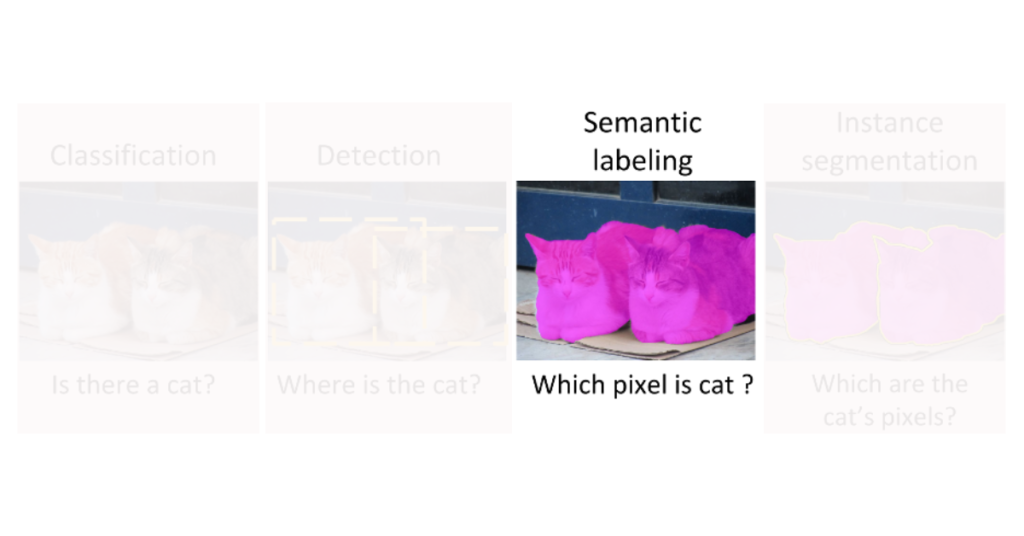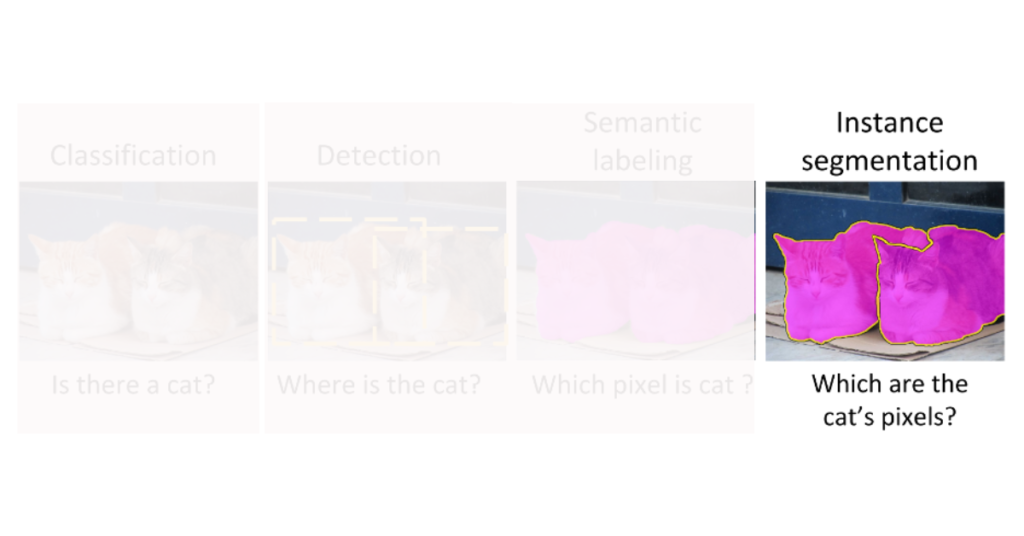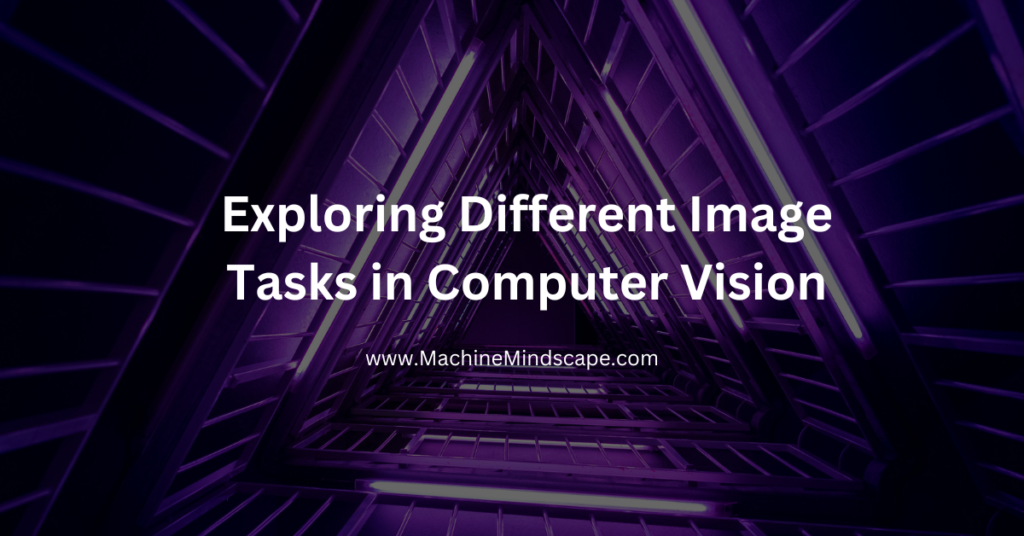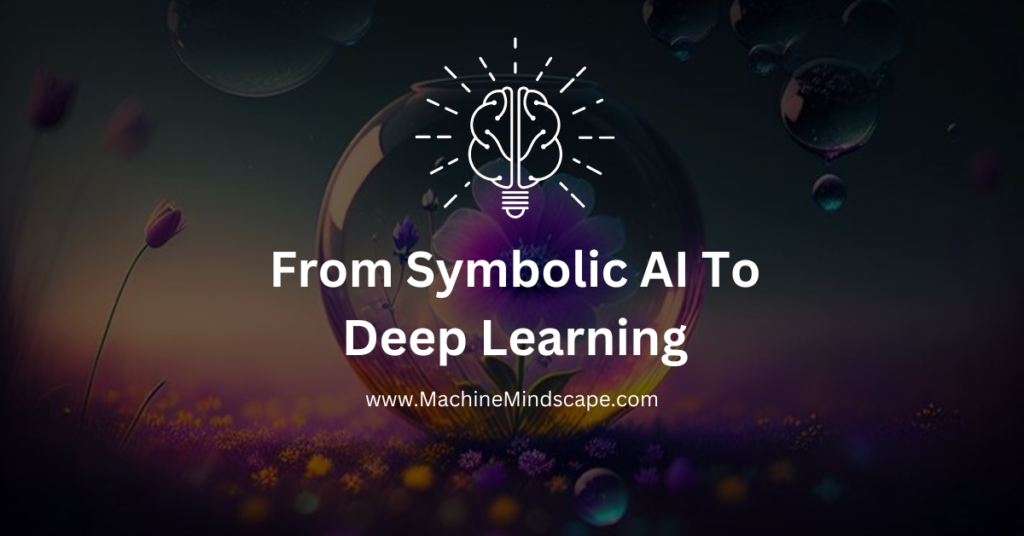Image Tasks – Computer vision opens up a whole new world of possibilities by teaching computers to understand images as we do. But how does it work? Let’s take a closer look. Within computer vision, there are various tasks, each with its own unique purpose. From recognizing objects to understanding scenes, we will explore different image tasks that can help us in solving different problems or extract different types of information from images.
Overview
Image Tasks Based on Classification
One of the fundamental tasks in computer vision is image classification which aims to understand and categorize an image as a whole under a specific label. This task plays a crucial role in various real-world applications, from identifying objects in photographs to analyzing medical images for disease diagnosis.
For example, the classification problem in the image below would be to identify whether there is a cat or not.

Image Tasks Based on Object Detection
Image detection is another fundamental task in computer vision that goes beyond image classification. While image classification focuses on recognizing and categorizing entire image, image detection aims to identify and localize multiple objects within an image, along with assigning a class label to each detected object
For example, detection focuses on the location of the cat, meaning there is a cat, where is it located?

Image Tasks Based on Segmentation
Semantic Segmentation
This computer vision task involves partitioning an image into semantically meaningful regions and assigning class labels to each pixel. This means that instead of looking at the whole image, semantic segmentation looks at tiny dots (pixels). It decides what’s in each pixel by looking at the colors and shapes around it. Then it gives color to pixels based on what it thinks is there.
For example, in the figure below, semantic segmentation tries to annotate every single pixel that belong to the cat class in the image

Instance Segmentation
Instance segmentation is an advanced computer vision task that goes beyond semantic segmentation. While semantic segmentation classifies each pixel in an image into different categories and classes, instance segmentation takes it further by not only segmenting the objects but also distinguishing between individual object instances within the same class.
Instance segmentation provides more detailed masks for each instance, outlining its precise boundaries at the pixel level. It has various practical applications, such as in autonomous driving for detecting and tracking multiple vehicles, in medical imaging for identifying and analyzing specific organs.
For example, instance segmentation identifies two different instances of the cat and which pixels belong to each pixel.

Summary
Classification, detection, and segmentation are fundamental tasks in computer vision that serve different purposes. From categorizing images to pinpointing objects and delineating detailed semantic boundaries, each task contributes uniquely to our understanding and interaction with visual data.
Choosing the right approach for a computer vision task depends on several factors, including specific requirements of the task, and available resources. You first have to clearly define the objectives of the computer vision task that you want to accomplish. Secondly, assess the data you have to see if you have labeled or unlabeled data. Thirdly, analyzing the complexity requirement of your task, and assessing trade-off between speed, accuracy, and resource requirements can help you in choosing the most suitable approach. Finally, you can experiment with existing methods and frameworks and then fine-tune them to adjust the models to leverage them to their full potential to complete the task at hand.
Further Reading
- What is computer vision? – IBM
- How Has Artificial Intelligence Evolved From Symbolic AI To Deep Learning? – MachineMindscape



